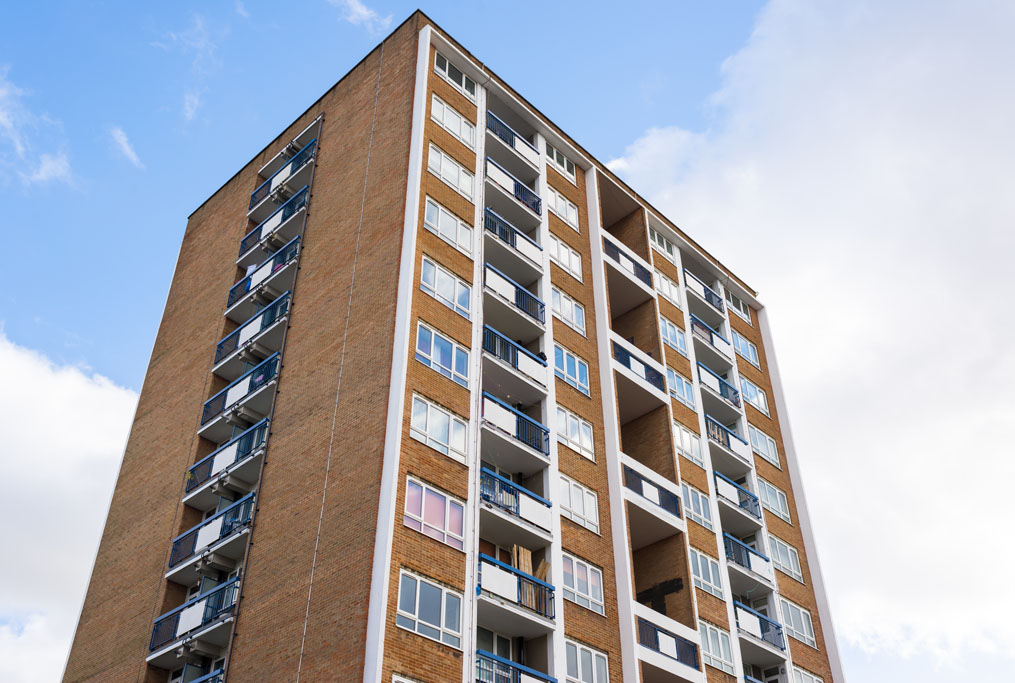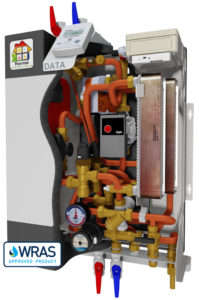
Heat interface units offer clear direct benefits to district heating systems in local authority flats, says Richard Hanson-Graville, Technical Manager at Thermal Integration.
Removing gas boilers from local authority properties and replacing them with high efficiency centralised boiler plant offers a host of solid benefits. For example, it enables the use of sophisticated technologies — including combined heat and power (CHP), biomass, extract air heat pumps, waste incineration, and solar thermal panels — which results in significant energy savings (up to half the energy required to deliver DHW over a heat network) as well as environmental benefits.
Heat interface units (HIUs) — which provide domestic hot water and central heating in properties connected to a district heating system (or heat network) using a central boiler — are fitted into each property. They take the heat from the central plant, and use this to provide central heating and hot water to taps.
Occupants are charged for units of heat rather than units of gas and the HIUs typically come with heat meters to measure energy use.
Overcoming heat losses
Probably the biggest challenge for HIUs (and district heating in general) is heat loss. To ensure that hot water is available without delay, HIUs draw a trickle flow of hot water from the primary supply to overcome heat losses, and in nearly all cases this runs continuously.
The implications are most keenly felt in properties fitted with pre-pay systems — common to many local authority properties — where the user can find their remaining credit drain away needlessly when the property is unoccupied. Manufacturers like Thermal Integration take a number of measures to mitigate this problem including:
- Moulded insulation: One way to reduce the rate of heat loss is to insulate. Thermal Integration HIUs make use of expanded polypropylene moulded enclosures that encase individual components supporting assemblies and preventing any heat bridging to the environment. Heat losses of under 2W are possible, making the drain on energy use less than 1p per day.
- Economy mode: Another way to reduce losses is to allow the system to go cold when not in use. Many electronic HIUs provide an economy mode whereby the Hip will go cold after one hour of inactivity, reducing energy consumption further. Sterilisation cycles ensure the system is never left cold for extended periods to prevent a build-up of Legionella bacteria.
- Advanced heat exchange: Running the network at lower temperatures, typically 65˚ C flow and 35˚C return, with low temperature drop across the plates also reduces heat loss. Multi-pass heat exchangers are used to ensure these types of temperature drops can be achieved, while maintaining turbulent flow across the range of outputs.
Improving security
Security is another important consideration in local authority properties. That is why forward-thinking HIU manufacturers make use of moulded security clips and caps that, once assembled, makes it impossible to access a bolt head or connection nut without breaking the cap.
Components such as heat meters and security valves also require security measures to be fitted to the pipework connections, to prevent their removal from the system. Meter security clips come in various sizes and provide a permanent security fixing that prevents access to connections without breaking the seal permanently.
All these measures can save energy, cut costs and improve security. But beware. It is critical that local authority specifiers take a total cost of ownership approach to HIUs — including running costs, something manufacturers and installers often care little — otherwise the savings evaporate.

Efficiency boost for heat networks
The use of district heating to deliver hot water and central heating to local authority properties is becoming more common, offering a way to provide cheaper, low carbon heat to residents. However, some heat networks are not performing as well as they should.
One reason for this is a lack of standards on HIUs (which deliver the hot water and central heating in heat networks) and poor independent performance data on equipment.
This looks soon to become a problem of the past, however, as a standard UK testing regime for HIUs has been developed by energy consultancy FairHeat, with a steering group of key industry stakeholders established to govern the standard.
Thermal Integration was one of the first companies to send its HIU to be tested by the SP Technical Research Institute of Sweden against this new standard, and it came out top when compared to other leading manufacturers. The company recently lent its expertise to a project designed to diagnose heat network inefficiencies using machine learning algorithms. Led by pay-as-you-go metering and efficiency monitoring company Guru Systems, and supported by FairHeat and Martin Crane of Carbon Alternatives, the project looked at efficiency data from three networks across the UK and used performance data to identify site improvements.
Thermal Integration provided its HIU expertise to the project team working on a development for housing association developer Network Homes. Using flow and return temperature data drawn from Guru Systems’ metering and billing systems, FairHeat identified that flow rates were poor.
Following analysis, the project team extracted an HIU from site and ran it through a series of tests to arrive at possible ways to improve the system. The solutions ranged from improving insulation, changing controls, and even the complete replacement of the HIUs.
In total, a comprehensive set of interventions, including valve replacement and insulation, was carried out by Thermal Integration on 44 HIUs, with a more minor programme of insulation works at a further 45 properties and the replacement of two HIUs.
Network Homes’ Director of Compliance and Planned Works, Gavin Pierson, said: “An improvement was noted immediately with the introduction of the improved units; the efficiency of the systems has increased and we are currently reviewing the working data to identify further efficiencies. The improvements carried out by Thermal Integration have allowed us to expand our knowledge of the HIU industry and the manufacturers leading the market.”








